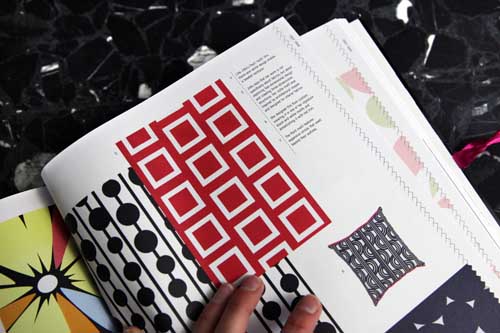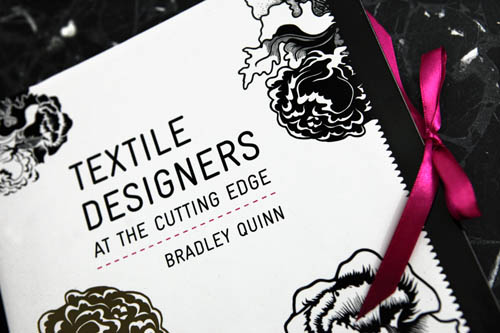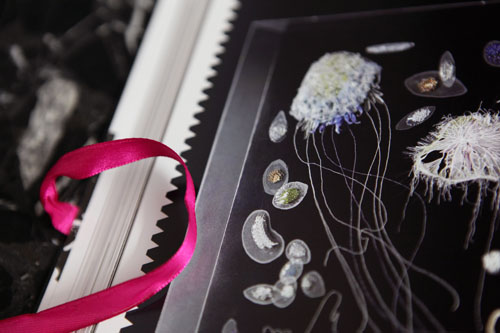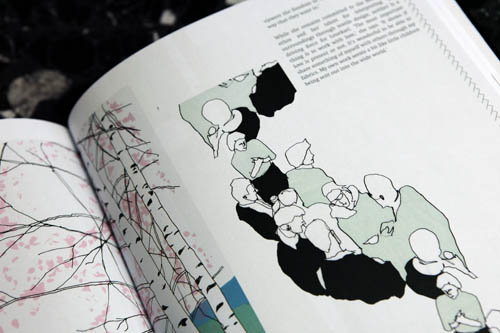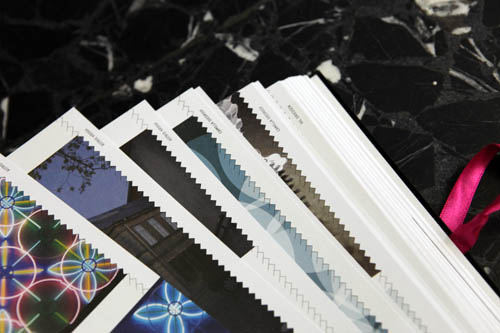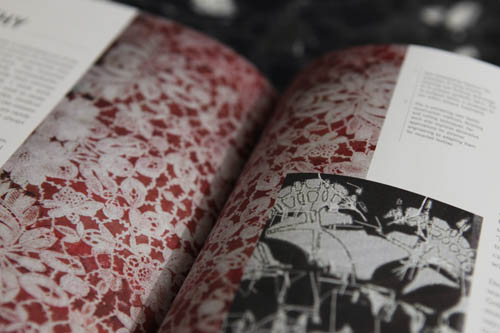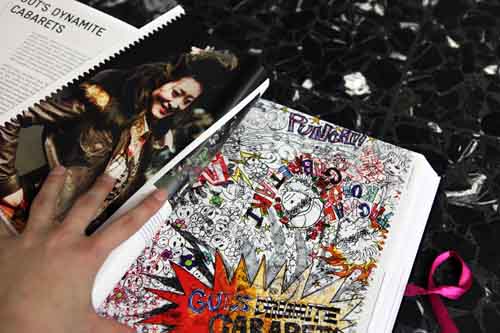Textile Designers at the Cutting Edge
»Textile Designers at the Cutting Edge« stellt exemplarisch ein paar der fantasievollsten Textil-Designer und deren Arbeiten vor. Unterteilt in die Bereiche, »Body« und »Space«.
Wenn die Designer sowohl Mode- als auch Innenausstattungs-Projekte machen, sind sie der Kategorie zugeordnet, in der sie am Bekanntesten sind. Durch die Textilbeispiele der verschiedenen Länder bekommt man – wie in der Kunst, im Grafik Design oder in der Architektur auch – einzigartige Einsichten in die Kulturen und in die Märkte für welche die Designer produzieren.
Ganz reizvoll finde ich die pink-farbenen Bänder an der Seite und auch die verkürzten Buchseiten bei den Kapitel-Anfängen, die aussehen, als ob man die Seiten mit einer Zick-Zack-Schere abgeschnitten hätte. Dies sind nur kleine Raffinessen; auf mich haben sie dennoch positiv gewirkt.
Pressetext von Laurence King Publishing:
Textile Designers at the Cutting Edge by Bradley Quinn and
published by Laurence King in February 2008 is a stunning
showcase of a selection of textile designs from all over the
world, presented in feature interviews with the world’s most
visionary young designers. Chosen for their contributions to
fashion textiles and interior fabrics, the designers describe their
output and inspirations in their own words.
A rich international mix of designers are placed into either ‘Body’ or
‘Space’ to reflect the area in which they are best known, however
many are active in both.
The designers provide unique insights into the cultures they come
from and the markets for which they produce work. In Nordic
countries such as Denmark and Finland, for example, where
winters are long and dark, light was a source of inspiration for
designers who decided to create illuminating textiles. Swedish
designers explain how their clients are fashioning their homes
rather than just decorating them, sparking a demand for
fashion-conscious textiles that are as bespoke as any couture
garment. German fashion designers describe a similar
phenomenon, where exchanges between clothing and other
cultural forms are seamlessly integrating fashion and fabric design.
They believe that today, neither is possible without the other.
In the Netherlands, textiles are forging new relationships with
architecture and landscape design, enabling the boundaries
between the three disciplines to fold into one another. British
designers are pioneering a similar approach, albeit on a smaller
scale. Shifting their focus from a fabric’s surface to its structure, they
are crafting a unique breed of structured textiles, which are often
based on new sources of sustainable materials. Textile designers
in India claim that recycling is nothing new; recent regeneration
projects are merely contemporary expressions of traditions that
have been around for thousands of years. As these designers
transform trash into textiles, they reveal the power that the fabric
industry has to regenerate the urban landscape and improve
individual lives.
This book examines the changing face of textile design, it charts
the furthermost boundaries of what a textile can be. As recent
developments in the field of textiles present new technical possibilities,
their applications in fashion, architecture and interior design have
redefined them as a uniquely multi-disciplinary field of innovation
and research.
Bradley Quinn is an author, journalist, and independent scholar with
expertise in fashion, textiles, and design. His books include Techno
Fashion, The Fashion of Architecture, Chinese Style, Scandinavian
Style and Mid-Century Modern.
--
600 colour illustrations
245 x 210 mm
320 pages
FLEXIBIND
ISBN – 978 1 85669 581 7
